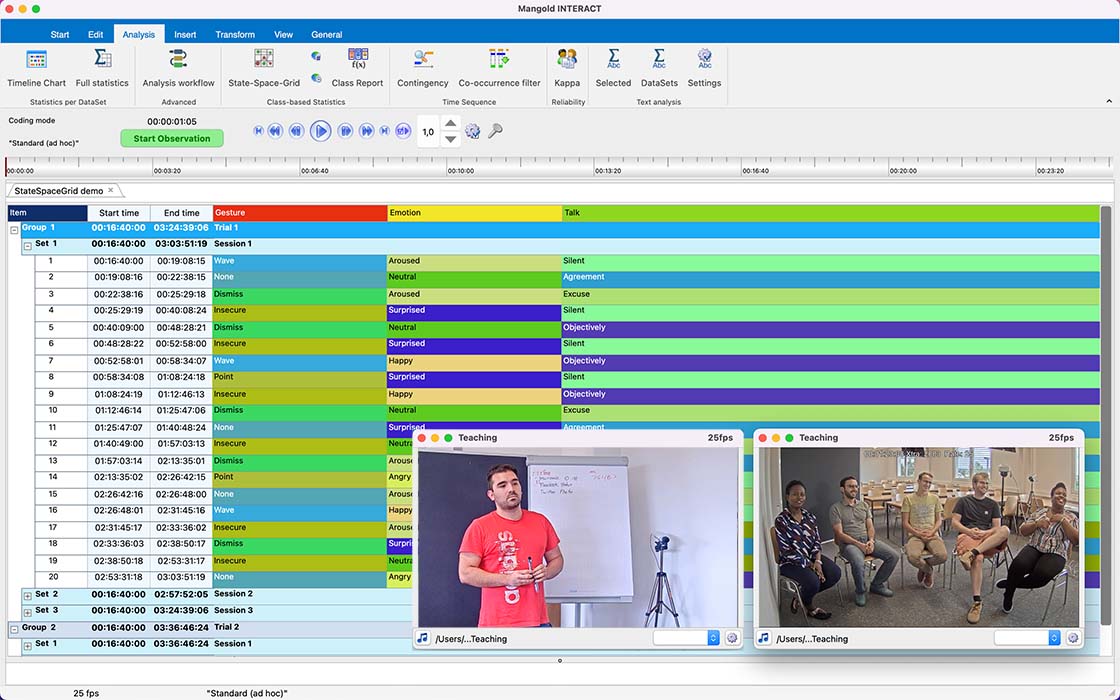· tutorial · 3 min read
Enhancing Data Analysis with Mutually Exclusive Codes
Learn how mutually exclusive codes can elevate your data analysis, providing clearer insights and more efficient workflows.

Introduction
In the world of data analysis, the quest for meaningful insights is paramount. Researchers and analysts strive to extract valuable information from raw data, and a robust coding system is essential to this process. Mutually exclusive codes are a powerful tool for enhancing data analysis, enabling researchers to categorize data precisely and uncover patterns effectively. This blog post will explore the concept of mutually exclusive codes, their benefits, and practical applications. We’ll also examine how Mangold International’s products, particularly INTERACT, can streamline the implementation and analysis of mutually exclusive coding systems.
What are Mutually Exclusive Codes?
Mutually exclusive codes are a set of categories where each data point can belong to only one category. In simpler terms, if a behavior or event is assigned one code, it cannot be assigned any other code within the same set. This ensures clarity and prevents ambiguity in data interpretation.
For instance, if you’re analyzing customer feedback on a new product, you might use mutually exclusive codes to categorize responses as “Positive,” “Negative,” or “Neutral.” Each feedback entry would fall into only one of these categories, making it easier to quantify sentiment and draw meaningful conclusions.
Benefits of Using Mutually Exclusive Codes
Mutually exclusive codes offer several advantages for data analysis:
- Enhanced Clarity: They eliminate ambiguity by ensuring that each data point has a single, unambiguous classification.
- Simplified Analysis: Mutually exclusive codes simplify data analysis by allowing researchers to easily compare and contrast different categories.
- Increased Accuracy: By preventing double-counting or overlapping categories, mutually exclusive codes contribute to more accurate results.
- Streamlined Workflow: A well-defined set of mutually exclusive codes can streamline the coding process, making it more efficient and consistent.
Practical Applications of Mutually Exclusive Codes
Mutually exclusive codes find application in various research areas:
- Behavioral Observation: Researchers can use mutually exclusive codes to categorize behaviors observed in videos, such as “Smiling,” “Frowning,” or “Eye Contact.”
- Content Analysis: Mutually exclusive codes can be used to categorize text data, such as news articles, social media posts, or survey responses, based on themes or sentiments.
- Market Research: Researchers can use mutually exclusive codes to analyze customer feedback, categorizing responses by product features, satisfaction levels, or demographics.
Mangold International’s INTERACT: A Powerful Tool for Mutually Exclusive Coding
Mangold International’s INTERACT software is a comprehensive solution for observational data analysis, providing robust support for implementing and analyzing mutually exclusive coding systems.
Here’s how INTERACT enhances the use of mutually exclusive codes:
- Customizable Coding Systems: INTERACT allows researchers to create and tailor their coding systems to the specific needs of their research, including defining mutually exclusive code sets.
- Multiple Sampling Methods: INTERACT supports various sampling methods, ensuring flexibility in data collection and analysis.
- Hierarchical Coding: INTERACT enables the creation of hierarchical coding systems, allowing for detailed and nuanced categorization.
- Real-Time Analysis: INTERACT’s real-time analysis features provide instant insights into coded data, allowing for adjustments and refinements during the coding process.
- Extensive Visualization Options: INTERACT offers a range of visualization tools, such as state-space grids and timeline charts, to help researchers explore and present their findings effectively.
Conclusion
Mutually exclusive codes are an indispensable tool for researchers and analysts seeking to enhance the clarity, accuracy, and efficiency of their data analysis. By ensuring unambiguous categorization and streamlining workflows, they contribute to more meaningful insights and robust research outcomes.
Mangold International’s INTERACT software offers a comprehensive platform for implementing and leveraging mutually exclusive coding systems. Its customizable features, support for multiple sampling methods, and powerful visualization tools make it an invaluable asset for researchers across diverse disciplines. Whether you’re conducting behavioral observations, content analysis, or market research, INTERACT can empower you to extract valuable insights from your data with ease and precision.




